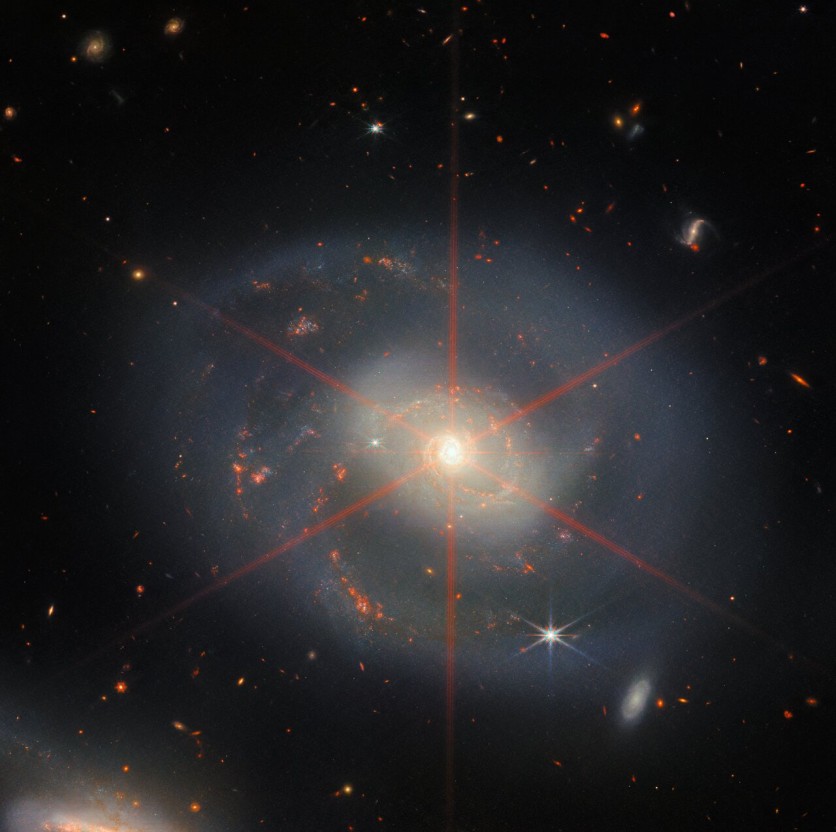NASA's powerful space telescope recently captured a spiky spiral galaxy that looks like a cosmic wreath!
Spiral galaxy NGC 7469 is located in the constellation Pegasus, 220 million light-years away, and revolves around an active galactic center (AGN).

Extremely Bright Central Region
At the very heart of this galaxy is an extremely bright central region bathing in light emitted by dust and gas flowing into the spiral's central black hole.
NASA explains that this galaxy is home to an AGN that is only 1500 light-years away from a starburst ring, which gives researchers the opportunity to explore the relationship between AGNs and starburst activity.
Even though NGC 7469 is one of the most well-studied AGNs in the sky, it has been challenging for researchers to get the resolution and sensitivity required to explore this relationship in infrared light due to the system's compactness and abundance of dust.
But now, astronomers can investigate the galaxy's starburst ring, the AGN, and all the gas and dust it brims thanks to Webb's powerful infrared eyes.
Young Star-Forming Clusters
The striking image shows pockets of extremely warm, turbulent molecular gas, and young star-forming clusters that have never been seen before.
The disintegration of tiny dust grains within a few hundred light-years of the nucleus was also directly observed, providing more proof that the AGN is having an impact on the interstellar medium, according to ESA.
Additionally, highly ionized, diffuse atomic gas appears to be leaving the nucleus at a speed of around 6.4 million kilometers per hour as a component of a galactic outflow exposed in stunning clarity by Webb.
More details about this nearby AGN and starburst laboratory are anticipated to come to light as the rich Webb datasets are analyzed.
Read Also : NASA's James Webb is Close to Uncovering the Distant Past of Our Universe, Astronomers Say
Six-Pointed Star
The brilliant six-pointed star that is perfectly aligned with the center of NGC 7469 is a notable aspect of this picture.
However, NASA noted that this is only a diffraction spike and not an actual celestial object like the galaxy. The spikes are present thanks to the bright, unresolved AGN in the center.
Diffraction spikes are patterns created when light bends around a telescope's sharp edges. Webb's main mirror is made up of hexagonal pieces with edges that light can scatter off of to produce six dazzling spikes.
Additionally, two other, more subtle spikes can be seen. These are caused by diffraction from the vertical strut that supports Webb's secondary mirror.
NGC 7469 was investigated as part of the Great Observatories All-sky LIRGs Survey (GOALS) Early Release Science program.
This program is focused on studying black hole growth, feedback in four nearby infrared galaxies, and the physics of star formation.

ⓒ 2025 TECHTIMES.com All rights reserved. Do not reproduce without permission.




